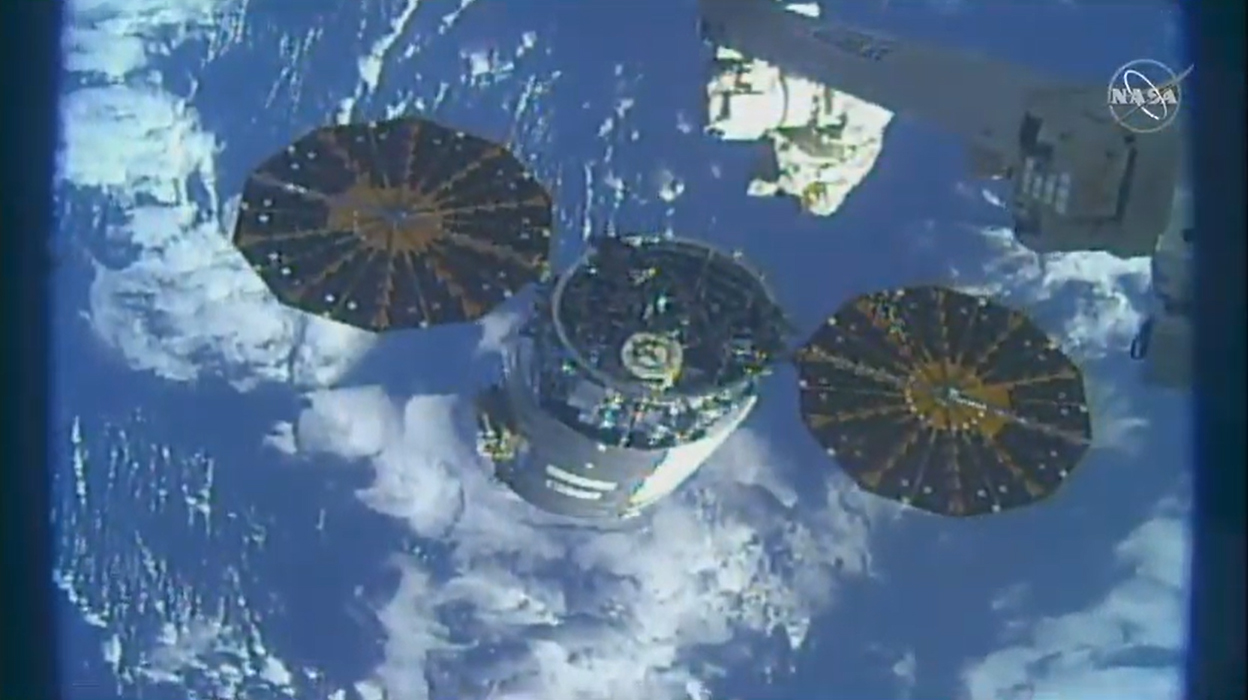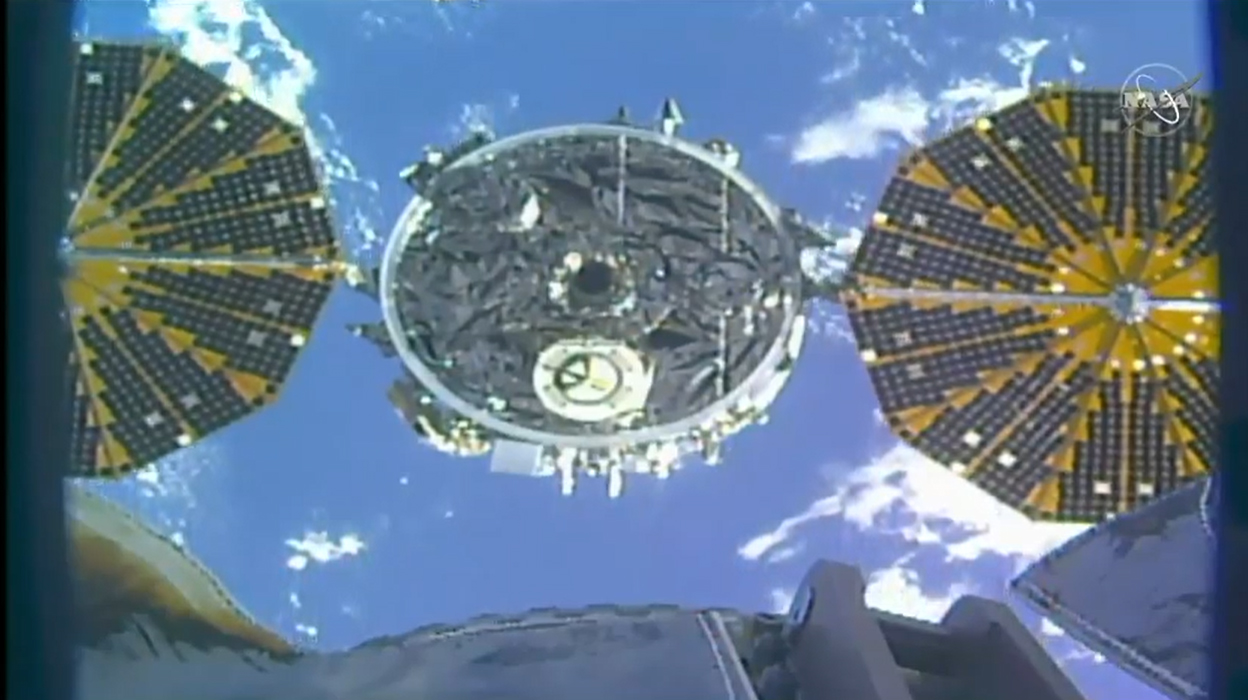Cygnus cargo ship leaves space station for free-flying fire mission
A robotic Cygnus cargo ship cast off from the International Space Station on Monday (May 11) to begin a brief, new life as a fire lab in orbit.
The Cygnus NG-13 spacecraft, which delivered tons of supplies to the station in February, was released by the space station's robotic arm at 12:09 p.m. EDT (1609 GMT) as both spacecraft sailed 260 miles (418 kilometers) above the Pacific Ocean. After 83 days at the station, the cargo ship will now spend several weeks on its own deploying tiny satellites and conducting a fire experiment that scientists hope will lead to safer spacecraft for astronauts.
The Northrop Grumman-built Cygnus NG-13 launched to the space station Feb. 15 on an Antares rocket and arrived three days later, delivering 7,500 lbs. (3,400 kilograms) of science gear, crew supplies and spacewalking tools in the process. It is now filled with 4,500 lbs. (2,041 kg) of trash and unneeded items (along with the fire experiment and cubesats).
Among NG-13's trash haul are the remains of NASA's High-Definition Earth Viewing Experiment. The experimental camera launched to the station in 2014 and provided stunning live HD views of the station and Earth until mid-2019, when it failed for good.
Related: See amazing launch photos of Antares and Cygnus NG-13!



NASA officials have said the Cygnus NG-13 spacecraft will eventually fall back to Earth on May 29, destroying itself in a fiery plunge through Earth's atmosphere over the Pacific Ocean.
Northrop Grumman named the ship the S.S. Robert H. Lawrence after the late Maj. Robert H. Lawrence, Jr., the first African American ever selected to be an astronaut. Lawrence was selected by the Air Force in 1967 as an astronaut for the Manned Orbiting Laboratory, a planned military space station. Sadly, Lawrence died in a training accident shortly after his selection.
Breaking space news, the latest updates on rocket launches, skywatching events and more!
Cygnus vehicles are disposable resupply craft designed to haul supplies to the station under multibillion-dollar contracts between Northrop Grumman and NASA. Two other companies, SpaceX and Sierra Nevada Corp., also have separate resupply contracts with NASA.
As its name suggests, NG-13 is the 13th Cygnus cargo ship to visit the station for NASA. One Cygnus vehicle was lost in a 2014 launch accident.
Before Cygnus NG-13 falls to Earth this month, the spacecraft must first deploy two small cubesats that NASA officials have said "will research ways to improve space communication techniques and GPS mapping systems," according to Spaceflight Now. The Cygnus will fly to a higher orbit than that of the space station and release the cubesats with a "Slingshot" deployer on the ship's exterior.
Meanwhile, NASA scientists will activate the Spacecraft Fire Safety IV experiment (or Saffire-IV) to better understand how fire behaves in space. The experiment will test fire-detection systems and study how fire in space spreads at a pressure equivalent to sea level on Earth, as well as at a lower pressure with a higher oxygen concentration, according to a NASA description.
"Understanding how fire behaves in microgravity, and how different materials propagate flames in space is immensely important for the development of future crew spacecraft," NASA officials wrote in a Saffire description. "It also will help inform operational protocols for dealing with fire emergencies, particularly when astronauts do not have the ability to exit a spacecraft or quickly return to Earth."
- Bacteria & bone: Here's the science on Cygnus NG-13
- Private Antares Rocket & Cygnus Spacecraft Explained (Infographic)
- Northrop Grumman names Cygnus spacecraft for first African American astronaut
Email Tariq Malik at tmalik@space.com or follow him @tariqjmalik. Follow us @Spacedotcom, Facebook and Instagram.
OFFER: Save 45% on 'All About Space' 'How it Works' and 'All About History'!
For a limited time, you can take out a digital subscription to any of our best-selling science magazines for just $2.38 per month, or 45% off the standard price for the first three months.

Tariq is the award-winning Editor-in-Chief of Space.com and joined the team in 2001. He covers human spaceflight, as well as skywatching and entertainment. He became Space.com's Editor-in-Chief in 2019. Before joining Space.com, Tariq was a staff reporter for The Los Angeles Times covering education and city beats in La Habra, Fullerton and Huntington Beach. He's a recipient of the 2022 Harry Kolcum Award for excellence in space reporting and the 2025 Space Pioneer Award from the National Space Society. He is an Eagle Scout and Space Camp alum with journalism degrees from the USC and NYU. You can find Tariq at Space.com and as the co-host to the This Week In Space podcast on the TWiT network. To see his latest project, you can follow Tariq on Twitter @tariqjmalik.

